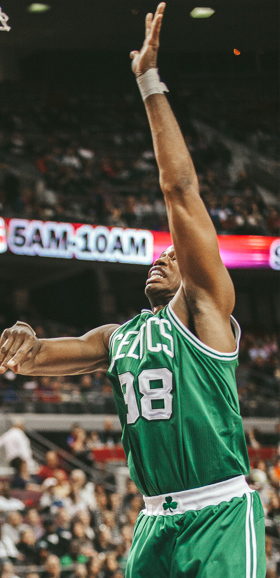Shifting Hegemonic Masculinity? Gay Male Athletes and Discourses of Masculinity

By mariselise derivative work: Steffaville [CC-BY-2.0], via Wikimedia Commons.
In her theory of masculinities, RW Connell identifies four idealtypical and related versions of masculinity: Hegemonic Masculinities (the cultural ideal of masculinity that legitimizes the superordination of men over women and that (most) men aspire to), Complicit Masculinities (the majority of men who buy into the hegemonic ideal and who benefit from patriarchy although they are themselves not able to fully embody hegemonic masculinity), Subordinated Masculinities (masculinity’s “other”, that which is deemed unmanly and culturally connected to femininity), and Marginalized Masculinities (masculinities at the intersection of race and class, ie men who cannot embody the hegemonic ideal because of their marginalization).
According to Connell, gay masculinities are the exemplary case of subordinated masculinities: “Gayness, in patriarchal ideology, is the repository of whatever is symbolically expelled from hegemonic masculinity” (78), it is associated with weakness, femininity and thus excluded from what it means to be a ‘real’ man. Based on these cultural stereotypes, it is no wonder that the fact of male gay athletes being visible in the hypermasculine environment of professional sports threatens to destabilize our very notions of masculinity and sexuality.
At the same time, however, gay male athletes themselves face the challenge of having to navigate or take on these stereotypes after their coming-out. Ironically, it is often hypermasculine discourses that both Michael Sam and Jason Collins drew on when establishing their identity as a gay male athlete in public. For instance, Michael Sam is quoted as saying “If someone calls me a name, I’ll have a chat with them. Hopefully it won’t lead to anything further”, implying his ability to engage in physical violence to defend himself. And when asked about his reaction to the support he has received by sports fans at his university, he responded “I wanted to cry, but I’m a man”, reinforcing the notion that real men are not supposed to show their emotions (although, one could argue that by admitting that he even had this emotional reaction, he does actually crack open the ‘manbox’ a little bit). Similarly, in Jason Collins’ very thoughtful coming-out article last year, he repeatedly emphasized his masculine traits of fearlessness, strength and toughness in trying to call into question stereotypes about gay men:
On the court I graciously accept one label sometimes bestowed on me: “the pro’s pro.” I got that handle because of my fearlessness and my commitment to my teammates. I take charges and I foul — that’s been my forte. […] I’m not afraid to take on any opponent. I love playing against the best. Though Shaquille O’Neal is a Hall of Famer, I never shirked from the challenge of trying to frustrate the heck out of him. (Note to Shaq: My flopping has nothing to do with being gay.) My mouthpiece is in, and my wrists are taped. Go ahead, take a swing — I’ll get up. I hate to say it, and I’m not proud of it, but I once fouled a player so hard that he had to leave the arena on a stretcher. I go against the gay stereotype, which is why I think a lot of players will be shocked: That guy is gay?
Because of gayness being tied culturally so close to weakness and femininity, these athletes are left with few options but making claims to masculinity by destabilizing the connection between homosexuality and a lack of masculinity. However, doing so does raise the question of whether our cultural notions of masculinity and its association with toughness, strength and ableness do come out of this process relatively unchanged. In other words, do gay male athletes disprove stereotypes about masculinity? Or do they merely prove that gay men can embody hegemonic masculinity?*
On a theoretical level, the transformations we have witnessed over the passed few years (from openly gay male athletes to marriage equality) may indicate a shift in Connell’s system of masculinities. It seems that gay masculinities are taking on some aspects that defined marginalized masculinities in her theory: Connell pointed out that one of the central factors of marginalized masculinities (men excluded from the hegemonic versions of masculinities due to their race and ethnicity) is the inability of these men – as a group – gaining legitimacy. Yet, individual marginal men (those deemed exceptional or exemplary) can, in fact, rise to the top and can be considered to embody the masculine ideal. For instance, Black actors and athletes (think: Michael Jordan) are amongst those who can be celebrated as de facto hegemonic men despite their racial marginalization. Crucially, though, the rise of these individual men of color does not uplift all men of color into legitimacy; instead they are still trapped in marginality.
In a parallel move, we might be seeing the rise of a few ‘exceptional’ gay men in the world of sports, able to dissociate themselves from the stereotypes surround subordinated (ie gay) masculinities. However, it remains to be seen whether this will result in stereotypes surrounding gay men being shattered more broadly, or whether society will regard them as merely ‘exceptional’ gay men. And even if we are witnessing a shift away from the association of male homosexuality with weakness, will this result in the destruction of our rigid definitions of masculinity (and femininity)? Or are we instead simply seeing hegemonic masculinity go through a process of modernization, allowing for a greater number of men (including increasing numbers of gay men) to assume positions of complicit masculinity, but leaving the overall superordination of men over women intact?
Further Reading:
Connell, RW. 2005. Maculinities. University of California Press.
*It is crucially important to reiterate Dave Zirin’s point that we can’t ask Jason Collins or Michael Sam to radically change masculinity for us and that being a gay male professional athlete today in itself is “a radical act” and the “only mountain” we should expect them to climb.




